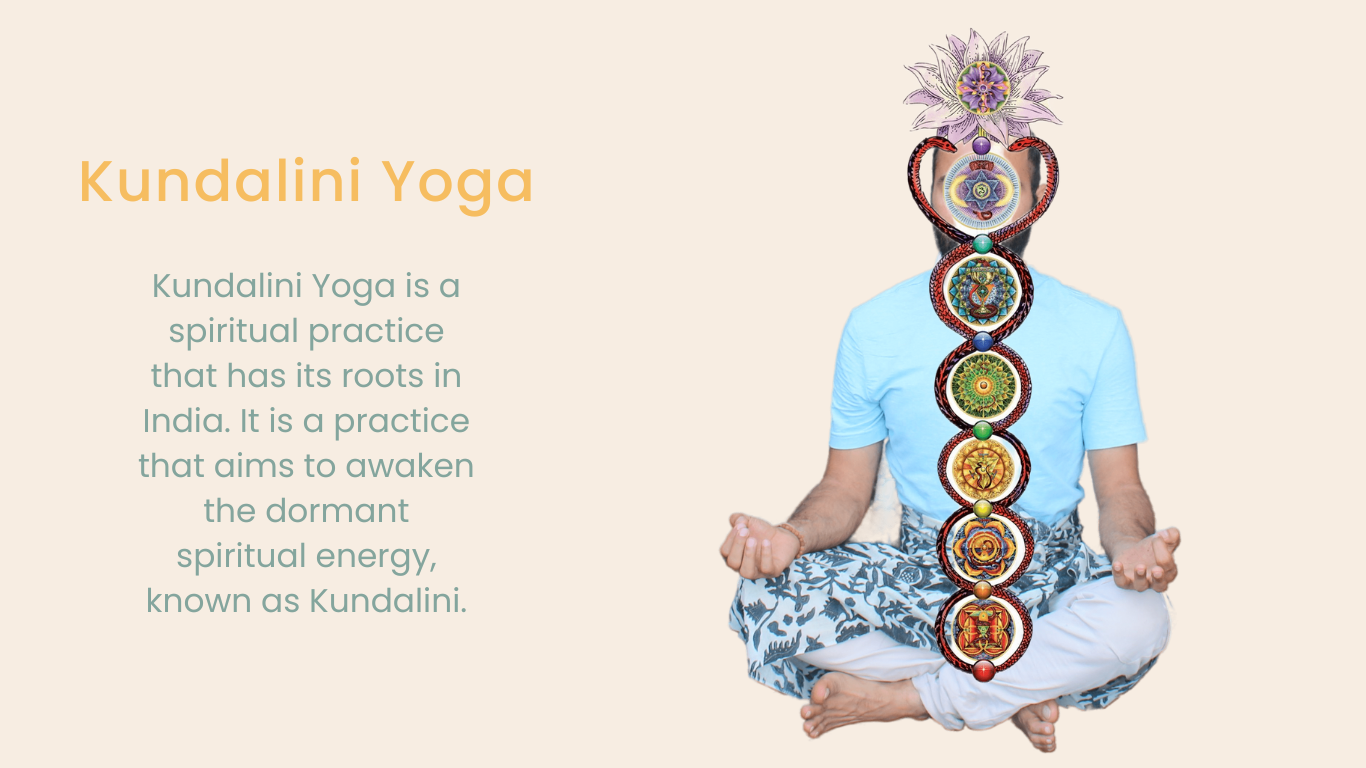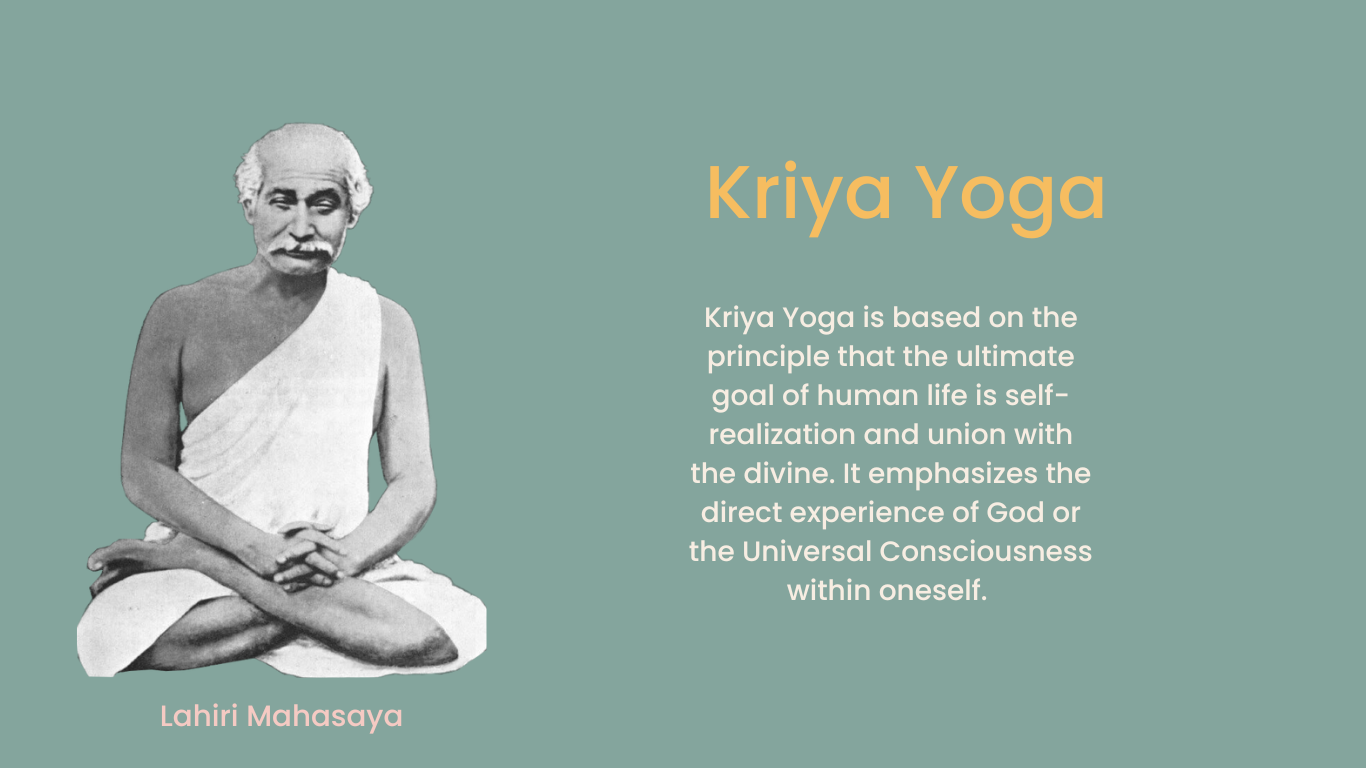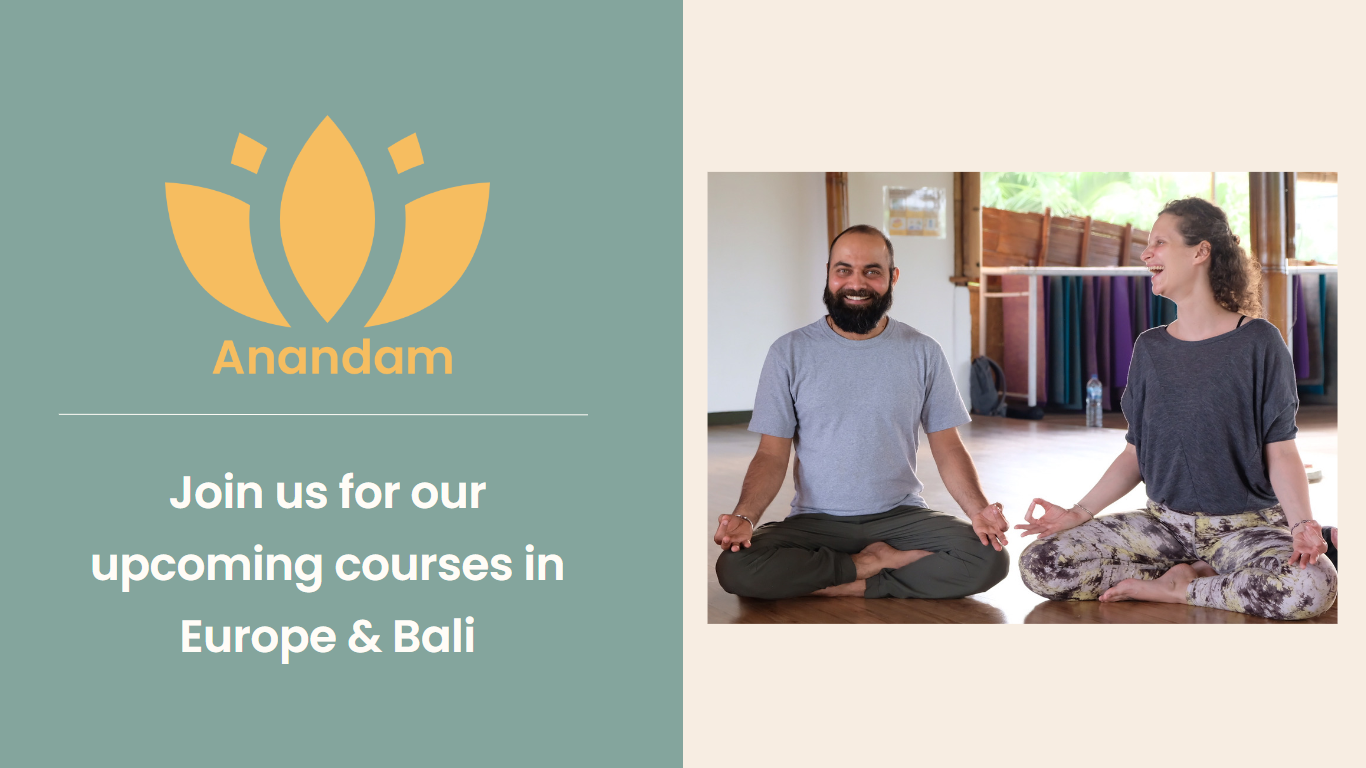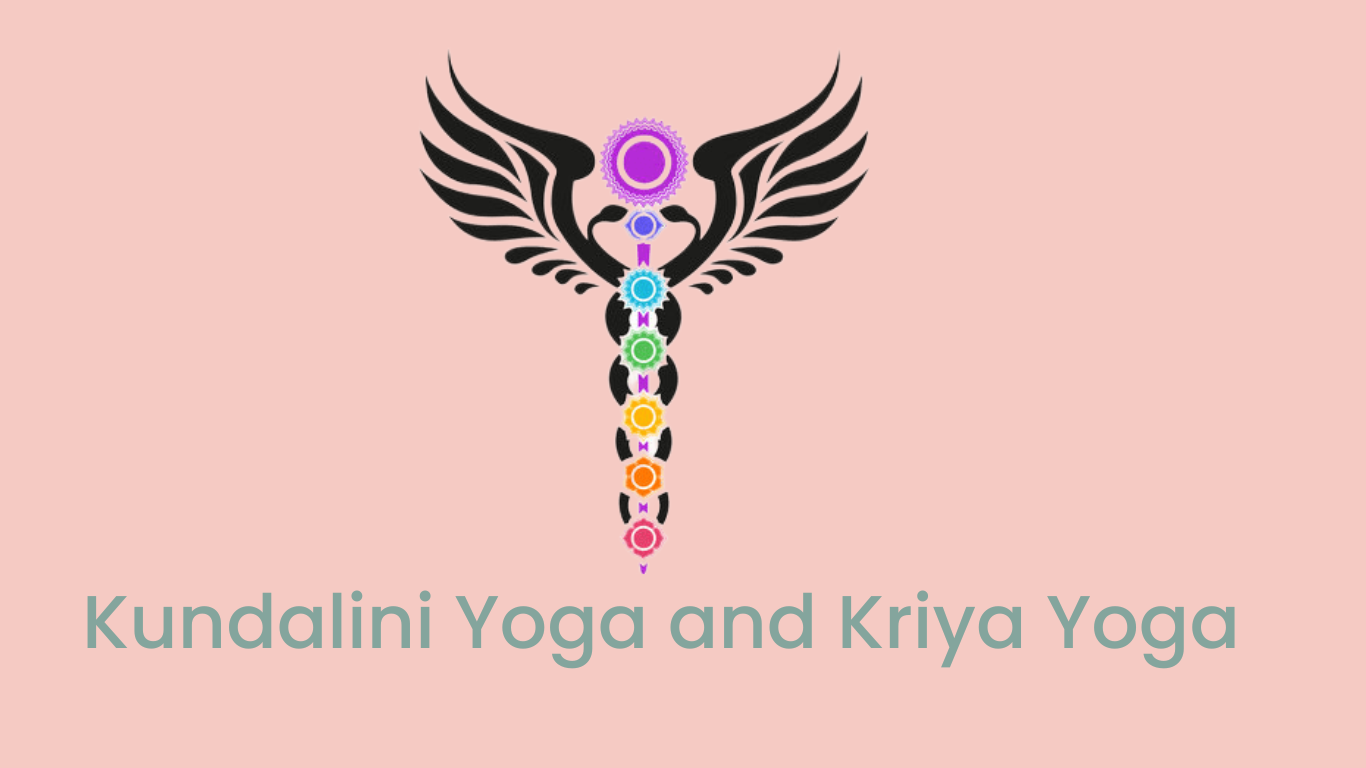Unlocking the Inner Energy: Kundalini Yoga and Kriya Yoga Explained
Both Kundalini Yoga and Kriya Yoga originate from ancient Indian traditions. While they have the same goal, the practices, philosophies, and approaches to unlocking the inner realms of consciousness differ.
Kundalini Yoga
Kundalini Yoga is a spiritual practice that has its roots in India. It is a practice that aims to awaken the dormant spiritual energy, known as Kundalini. Let's explore the origins, underlying principles, key aspects, and typical postures of Kundalini Yoga.

Origin of Kundalini Yoga
The origins of Kundalini Yoga are found in the ancient Indian scriptures, including the Upanishads and the Yoga Sutras of Patanjali. However, it was Yogi Bhajan (Harbhajan Singh Khalsa) who introduced Kundalini Yoga to the Western world in the late 1960s. Yogi Bhajan, a Sikh yogi and spiritual teacher, believed that everyone has the potential to experience their higher consciousness and connect with the divine energy, through this practice.
Underlying Principles of Kundalini Yoga
Kundalini Yoga is based on the concept of Kundalini energy. According to yogic anatomy it resides dormant at the base of the spine. The practice seeks to awaken this dormant energy and guide it upward through the chakras, the subtle energy centers in the body, to achieve spiritual enlightenment. The underlying principle is that by harnessing and channeling this powerful energy, individuals can elevate their consciousness, expand their awareness, and experience a profound sense of connection and union with the divine.
Explore the Seven Chakras and visit us at our Bali Yoga Teacher Training Center
Read our latest blog to learn more about the chakras and find out how the Yoga Teacher Training in Bali can support you on your path to spiritual growth.
Key Aspects of the Practice of Kundalini Yoga
Asanas (Postures):
Kundalini Yoga incorporates a wide range of physical postures or asanas that are designed to stretch and strengthen the body, balance the energy flow, and prepare the practitioner for meditation. These postures are often dynamic and accompanied by specific breathwork techniques, like the breath of fire.
Pranayama (Breathwork):
Breathwork plays a crucial role in Kundalini Yoga. Specific pranayama techniques are used to control the breath, expand the lung capacity, and stimulate the flow of prana (energy). These techniques help to awaken and move the Kundalini energy throughout the body.
Mantras and Chanting:
Kundalini Yoga incorporates the use of mantras (sacred sounds or words) and chanting as a means of invoking specific energies and enhancing the vibrational frequency. The repetition of mantras helps to focus the mind, uplift the spirit, and create a meditative state.
Meditation:
Meditation is a fundamental aspect of Kundalini Yoga. Various meditation techniques are employed, including focused concentration, visualization, and silent meditation, to calm the mind, deepen self-awareness, and experience a state of inner calmness.
Typical Postures of Kundalini Yoga
Kundalini Yoga includes a wide variety of postures, each serving a specific purpose in awakening and balancing the energy. Some common postures include:
Cobra Pose (Bhujangasana):
This posture involves lying face-down, placing the palms on the floor beneath the shoulders, and lifting the chest while keeping the lower body grounded. It helps to open the heart center and stimulate the flow of energy along the spine.
Spinal Twist (Ardha Matsyendrasana):
Sitting with the legs crossed, the practitioner twists the upper body to one side while maintaining an erect spine. This posture helps to release tension in the spine, improve digestion, and stimulate the flow of energy along the central channel.
Shoulder Stand (Sarvangasana):
This inverted posture involves raising the legs and supporting the lower back with the hands while the body is balanced on the shoulders. It promotes blood circulation, strengthens the core, and activates the throat and crown chakras.
Breath of Fire (Kapalabhati Pranayama):
While seated, the practitioner engages in rapid, forceful exhalations through the nose, followed by passive inhalations. This technique helps to cleanse the respiratory system, increase energy, and awaken the Kundalini energy.
Unleash Your Inner Power: Kundalini Yoga Practice at Bali Yoga Teacher Training
Remember that Kundalini Yoga is a profound spiritual practice that requires proper guidance and respect for its transformative power. It is important to practice under the guidance of an experienced teacher.
Introduction of Kriya Yoga
Lahiri Mahasaya, a 19th century Yogi revitalized the practice of Kriya Yoga and brought it to prominence. Lahiri Mahasaya's teachings were later popularized in the West by his disciple, Paramahansa Yogananda, through his book "Autobiography of a Yogi."
Underlying Principles of Kriya Yoga
Kriya Yoga is based on the principle that the ultimate goal of human life is self-realization and union with the divine. It emphasizes the direct experience of God or the Universal Consciousness within oneself. The practice of Kriya Yoga aims to purify the mind, body, and energy system, leading to the awakening of higher states of consciousness and the realization of one's true nature.

Key Aspects of the Kriya Yoga Practice
Kriyas
It involves a series of specific techniques known as kriyas, which are precise and systematic actions that harmonize the physical, mental, and energetic aspects of the practitioner. These kriyas may include physical postures (asanas), breath control (pranayama), mantra repetition, and meditation techniques.
Pranayama (Breathwork)
Pranayama plays a vital role in Kriya Yoga. Specific breath control techniques are employed to regulate and balance the flow of prana, or life force energy, in the body. Through pranayama, the practitioner learns to control the breath and direct the life force to awaken dormant spiritual energy.
Meditation
Meditation is a central aspect of Kriya Yoga. Practitioners learn to still the mind, cultivate deep inner awareness, and experience states of expanded consciousness. Kriya Yoga employs various meditation techniques, including concentration on energy centers (chakras), visualization, and the practice of advanced meditation methods like Hong-Sau and Aum techniques.
Balinese Bliss: Kriya, Pranayama, Meditation in our Yoga TTC in Bali
Typical Kriya Yoga Postures
While Kriya Yoga primarily focuses on the internal aspects of practice, it may also incorporate certain physical postures (asanas) to prepare the body for deeper meditation and spiritual experiences. These postures are typically simple and seated, allowing for stability and comfort during extended periods of meditation.
Siddhasana:
This seated posture involves crossing the legs, placing the heel of one foot at the base of the opposite thigh, and vice versa. It helps to create a stable foundation for meditation and promotes the free flow of energy.
Padmasana:
Also known as the Lotus Pose, Padmasana involves crossing the legs and placing each foot on the opposite thigh. It is considered a traditional meditation posture that helps to align the energy centers and calm the mind.
Sukhasana:
This is a simple cross-legged sitting position where one ankle is placed in front of the other. Sukhasana provides a comfortable and relaxed posture for meditation and allows for easy breath control.
Yoga School: Mastering Siddhasana, Padmasana, and Sukhasana
Exploring the Similarities of Kundalini Yoga and Kriya Yoga
1. Breathwork:
Both practices incorporate specific breathwork techniques to facilitate the movement of energy and deepen the practitioner's awareness. Pranayama (breath control) plays a significant role in both Kundalini Yoga and Kriya Yoga, helping to harmonize and expand the vital life force within.
2. Meditation:
Meditation is a fundamental aspect of both Kundalini Yoga and Kriya Yoga. Both practices utilize various meditation techniques to quiet the mind, cultivate inner awareness, and facilitate a direct experience of higher states of consciousness.
3. Inner Transformation:
Both paths aim to facilitate inner transformation and spiritual evolution. They offer practitioners tools and practices to develop self-awareness, dissolve limitations, and expand their consciousness, leading to a deeper connection with the divine and a more profound understanding of oneself.
4. Spiritual Awakening:
Kundalini Yoga and Kriya Yoga both seek to awaken the practitioner to their true nature and higher states of consciousness. They provide pathways to experience spiritual enlightenment, self-realization, and a sense of union with the divine.
Exploring the differences between Kundalini Yoga and Kriya Yoga
1. Origins and Lineage
Kundalini Yoga as we know it today was popularized by Yogi Bhajan in the late 20th century. While it draws inspiration from ancient yogic traditions, it does not have a specific historical lineage associated with it.
Kriya Yoga has a well-defined lineage that can be traced back to Lahiri Mahasaya, who was a disciple of the revered yogi Mahavatar Babaji. The teachings of Lahiri Mahasaya were later spread by Paramahansa Yogananda, who wrote extensively on Kriya Yoga in his book "Autobiography of a Yogi."
2. Techniques and Practices
Kundalini Yoga includes dynamic movements (asanas), breathwork (pranayama), chanting (mantras), meditation, and more to achieve spiritual enlightenment and union with the divine.
Kriya Yoga primarily focuses on specific techniques called kriyas, which are precise and systematic sequences of postures, breath control, and meditation. These kriyas aim to harmonize and purify the physical, energetic, and mental aspects of the practitioner, leading to self-realization and direct experience of the divine.
3. Accessibility and Initiation
Kundalini Yoga classes are widely available to the public, and individuals can practice Kundalini Yoga without specific initiation or formal authorization. The teachings and practices are accessible to anyone interested in exploring the path.
Kriya Yoga is traditionally passed down from a qualified teacher to a student through a process of initiation. This ensures a direct connection to the lineage and teachings of Kriya Yoga. Initiation into Kriya Yoga usually involves receiving specific techniques and instructions from a recognized Kriya Yoga teacher.
4. Emphasis on Energy Awakening
Kundalini Yoga places a significant emphasis on awakening the dormant Kundalini energy located at the base of the spine. The practice aims to facilitate the upward movement of this energy through the chakras, leading to spiritual awakening.
In Kriya Yoga the primary focus is on balancing and purifying the energy system rather than specifically awakening Kundalini.
While Kundalini Yoga and Kriya Yoga have different practices, lineages, and approaches, they ultimately share a common goal of awakening the spiritual potential within individuals and guiding them towards self-realization. Both paths offer valuable tools and techniques to facilitate personal growth, inner transformation, and the journey towards spiritual awakening.

Elevate Your Spirit with Kundalini and Kriya: Embark on a Wellness Retreat in Germany or discover the Best Yoga Yoga training in Bali. Find balance, rejuvenation, and inner transformation as you immerse yourself in these powerful practices. Unleash your potential and experience profound healing at our serene locations.

